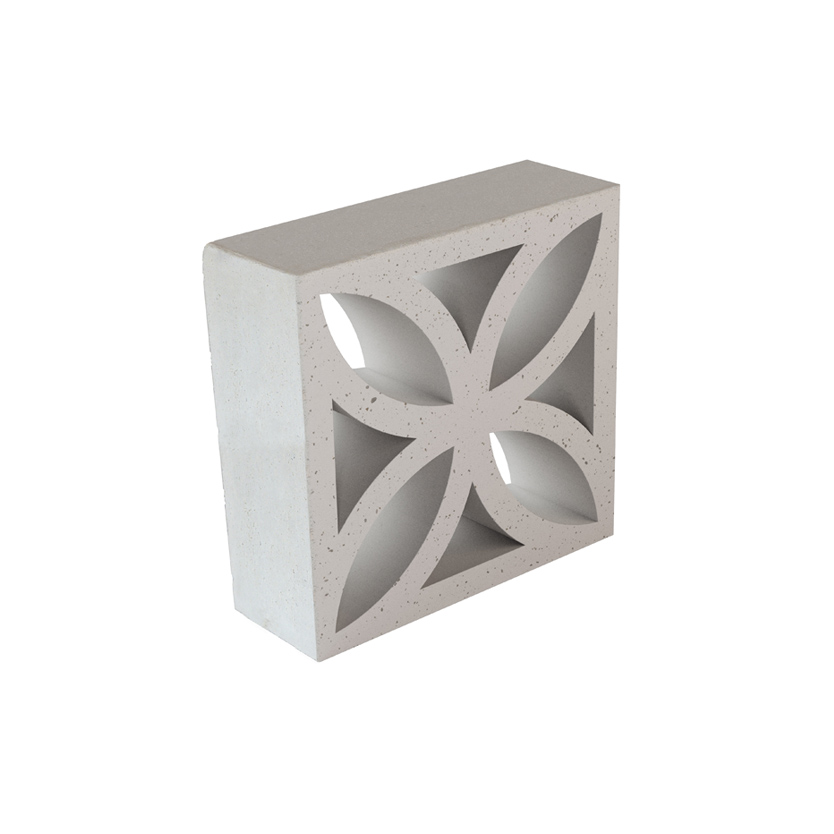

We now had our very own decorative breeze block wall at the Retro Ranch.

And I’m proud to say that the results stunned me.

So once we adjusted our mixture and developed a system that allowed us to move quickly with minimal cursing and/or throwing things, it all went according to plan. I also deduced that the Portland cement mixture consistency needed to be more like brownie batter, instead of cake batter (we were clearly heading into dinnertime). It also occurred to me that what we were attempting was alarmingly similar to something I experienced in my Sculpture 201 class waaaay back in college (hooray for liberal arts degrees!). But I was armed with a level and a vision, and was fully intent on getting my own damn breeze block wall if it took me all night. Which was a pretty awesome and motivating start to our first masonry project that contained a finite amount of resources.ĭavid was ready to throw in the towel (trowel?) and remove this ridiculous project from our list entirely. So I don’t think I have to even tell you that the first two blocks we constructed fell right over and broke into several pieces. Did I mention we can’t get any more of these blocks? Just wanted to make sure I mentioned that.
Decorative breeze blocks full#
But how hard could it be? You just mix up a few bags of Portland cement, slap a few trowels full on to the patio, and somehow level and stabilize a set of very narrow and wobbly concrete blocks (of which we cannot get any more of) in the blinding sun while the cement is curing before your very eyes. Now let me just add the caveat that neither of us had ever done any type of masonry work before. Plus, the design style was an exact replica of the ones used at The Leiahua in Honolulu. But they were now in our possession, and that was enough for me. And it was the middle of a very rainy winter. Incidentally, we had no idea what we were going to do with them. Finally! They were ours! Oh the things we could build with these! So off we went, into the depths of industrial NE Portland, to claim our geometric midcentury prizes from the shipping dock of a manufacturing facility. “18 Decorative Concrete Breeze Blocks – never used, you haul, $60”

And sourcing these ourselves was only an option if we wanted to pay more in freight costs than in actual breeze blocks, which of course makes perfect fiscal sense for any new homeowners.īut one unsuspecting rainy December afternoon, David discovered the Craigslist jackpot: Especially since Oregon is one of the few states that has no distributors for breeze blocks. When we purchased the Retro Ranch we were a tad dismayed that it didn’t come with a breeze block wall. Breeze block walls created a unique type of decorative privacy, so Madge could hang her laundry without having to chit-chat with neighbors, and Ethyl could prune her roses without having to look at Junior’s rusty old rattle-trap Studebaker in the drive. These masonry marvels quickly became a hit with residential builders and homeowners as well. In pre-air conditioned sunshine states like California, Florida and Arizona, they created a decorative screen to shade buildings from the sun while still allowing daylight and breezes in (and Lucky Strike cigarette smoke out). One reason breeze blocks were so popular with midcentury era builders is that they provided visual interest to a building while still remaining structural. Superlite concrete blocks were also fire resistant, absorbed sound, and were immune to both decay and termites, so I’d venture to guess that the technology and research put into developing these miraculous blocks pretty much rivaled the moon landing. This swell invention was developed by a company called Superlite Builders Supply in Phoenix, AZ and became overwhelmingly popular in the 1950s and 60s.


 0 kommentar(er)
0 kommentar(er)
